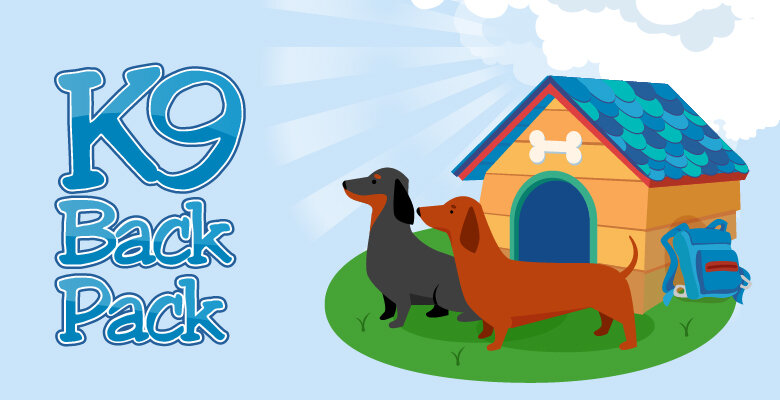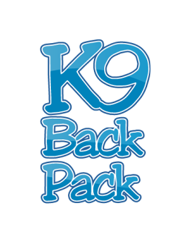Conservative Treatment: What We've Learned
There is no substitute for good veterinary care.
This information is for educational purposes only and should NOT be used in place of a consultation with your veterinarian.
OUR OBSERVATIONS:
Through the years, we’ve met hundreds of people who have IVDD dogs. We’ve learned about different treatment options and outcomes.
It is important to remember that each dog is different and so is each herniation, and you and your vet are responsible for your dog’s treatment. That said; we also feel it is imperative to make a few comments regarding our observation of the general outcomes from all of those dogs' recoveries.
TREATMENT OPTIONS
1) Surgery
If a dog has a disc herniation which progresses to paralysis very quickly or after trying medications and crate rest, the dog is still in too much pain and/or getting worse in terms of neurological function and/or pain; or continually has setbacks, surgery might be the best treatment option.
2) Conservative Treatment
If surgery is not an option for whatever reason (financial, medical, etc.), or if the dog has a less severe episode, through the years we have observed that the following regimen often provides good results:
Bed/Crate Rest
This is one of the most important aspects of conservative treatment. It is absolutely imperative. If the dog is not strictly rested (carried to and from potty place and only allowed minimum steps during potty time; dog also rests calmly in bed rest den/crate.) for 6 to 8 weeks, more often than not, the dog will not heal correctly and often gets worse. Bed rest allows proper healing and along with medicines, reduces the swelling caused by the disc herniation. Think of bed rest like a cast on a human’s broken arm. Restricted movement permits proper healing.
Medications
Specifically the use of Prednisone, Prednisolone, or Dexamethasone (steroids) for the amount of time required to control the swelling and tapered appropriately to a stop, deal with the inflammation better than NSAIDs (Rimadyl, Deramaxx, Metacam, etc.). A steroid combined with Tramadol (a synthetic opiate painkiller), Gabapentin (treats nerve pain), and if necessary also Methocarbarbamol (muscle relaxer) provides the best inflammation and pain control when given correctly and with an acid reducer such as Famotidine. Complementary treatments such as acupuncture and laser therapy provide increased pain relief and speed healing, resulting in faster recovery and often better neurological results.
If a dog has a medical condition that could worsen with the use of steroids (Cushing’s, diabetes, cardiac problems, etc.) then an NSAID would be the drug of choice.
In otherwise healthy dogs, the use of Prednisone and Tramadol plus Gabapentin and/or Methocarbamol when needed often provides better relief of symptoms (pain and swelling) than the use of NSAIDs alone.
Which Steroid, How Much and For How Long?
Which? The most commonly prescribed glucocorticoids (AKA “steroids”) prescribed by vets are usually Prednisone, Prednisolone, and Dexamethasone. Prednisolone is less stressful on the liver and easier to metabolize.
The recommended dosage of steroids varies depending on the weight of the dog, the condition that is going to be treated, and how the dog responds to the medicine.
It is VERY important to have close communication with your vet and give feedback to your vet on how your dog is responding to the medicines. Success often depends on quickly adjusting the medicines to your dog’s particular needs.
How much? Prednisone and Prednisolone are rather short acting and are usually given once or twice a day. For anti-inflammatory purposes, most vets will recommend an *approximate* dose of 1 mg per kilo per day, or 0.5 mgs per kilo twice a day. The dose could be a bit more or less and the amount depends on the severity of the symptoms. 1 kilo equals 2.2 pounds, so to know your dog’s dose:
Dog’s weight in pounds/2.2= Dog’s weight in kilos.
Then:
Dogs weight in kilos * 0.5= mgs of prednisone given every 12 hours.
OR
Dog’s weight in kilos * 1= mgs of prednisone to be given every 24 hours.
More information on Glucocorticosteriods: Merck Manual's information on steroids
Two approaches are usually considered:
1. High to low: If the symptoms of the herniation are severe (drunken walk, lots of pain, loss of neuro function, etc.) many vets prefer to start on a high dose of steroids, or on stronger steroids like a shot of Dexamethasone. The “loading dose” of Prednisone could be higher than the average of 1 mg per kilo per day for only 1-3 days, and then lowered to a “maintenance dose” of around 0.5 mg per kilo per day for several days. Then, if the symptoms of swelling do not return and the vet agrees, the dose is gradually tapered down over the next few days/week.
2. Low to high: If the symptoms of the herniation are not too severe (pain, yelping, arched back, etc.) the vet might prefer to start the dog on a low dose of Prednisone, around 0.5 mgs per kilo per day, and increase it ONLY if that dose is not enough to control the symptoms.
For how long? Steroids are used to control the swelling caused by the herniation. Once the swelling is down, there is no reason to continue to give them; but, steroids must be tapered down and must never be stopped suddenly (unless the dog has severe side effects, like a bleeding ulcer, and your vet approves a drastic stop of the drugs). If the dog has muscle spasms or pain, it is better to give other medicines that target those issues directly, like muscle relaxers (Methocarbamol, Valium), or pain killers (Tramadol, Gabapentin).
Read our article on pain killers.
Summation
In general the duration of treatment depends on the severity of the symptoms: If the dog has severe symptoms (paralysis, loss of bladder control, too much pain), usually it can be assumed the herniation is serious and it might take a bit longer for the swelling to be controlled. In those cases it could take anywhere from two weeks up to four weeks before dogs can be totally weaned off the steroids.
If the case is milder (pain, arched back, wobbly walking) dogs might need steroids for a shorter period of time, which can be anywhere between 5 to 14 days.
Again, duration of treatment depends entirely on the severity of the symptoms and how the dog’s body responds to treatment.
NOTE: No drug will heal the herniated disc. Drugs are prescribed to control the symptoms. The dog’s body does the healing. Drugs and bed rest will help provide the ideal environment for the disc to form scar tissue and for the nerves to heal and function again. If bed rest is not done correctly, more disc material could protrude out of the disc causing further, possibly permanent neurological damage and reoccurring symptoms. Drugs do not substitute bed rest; they aid in controlling the symptoms.


